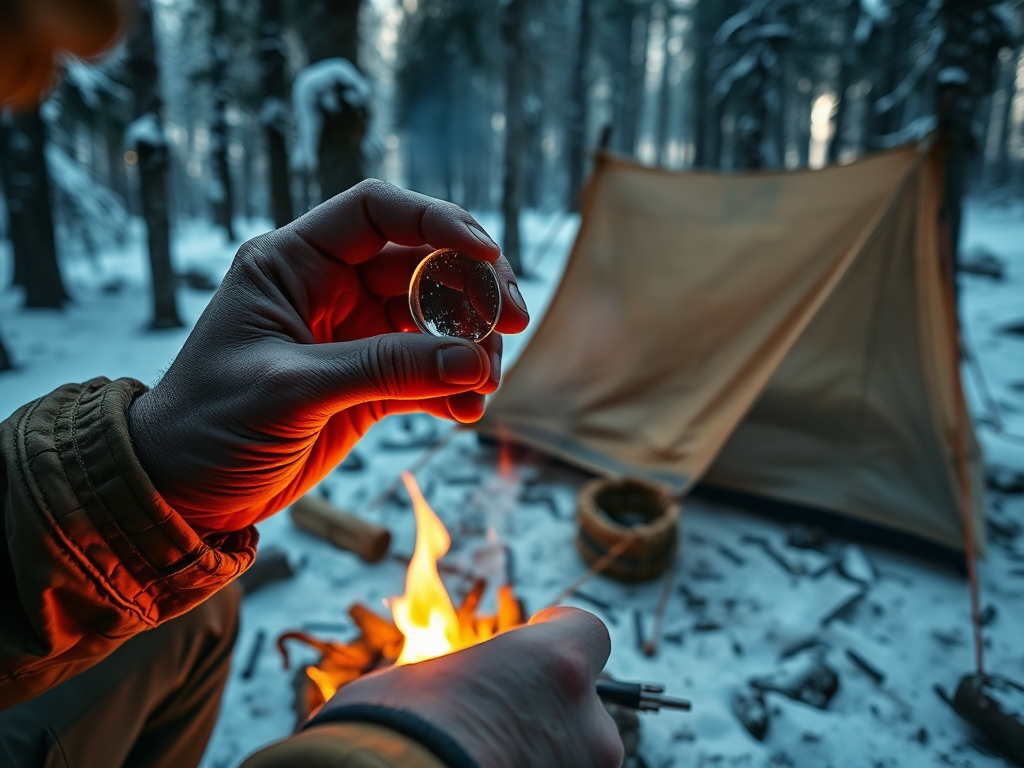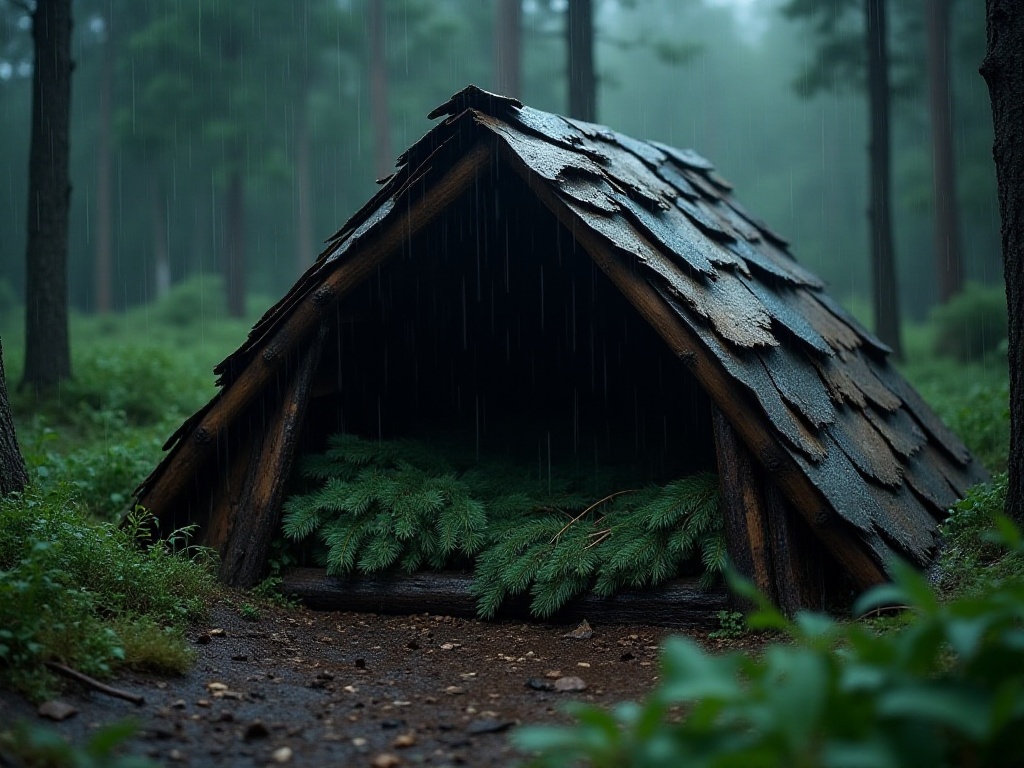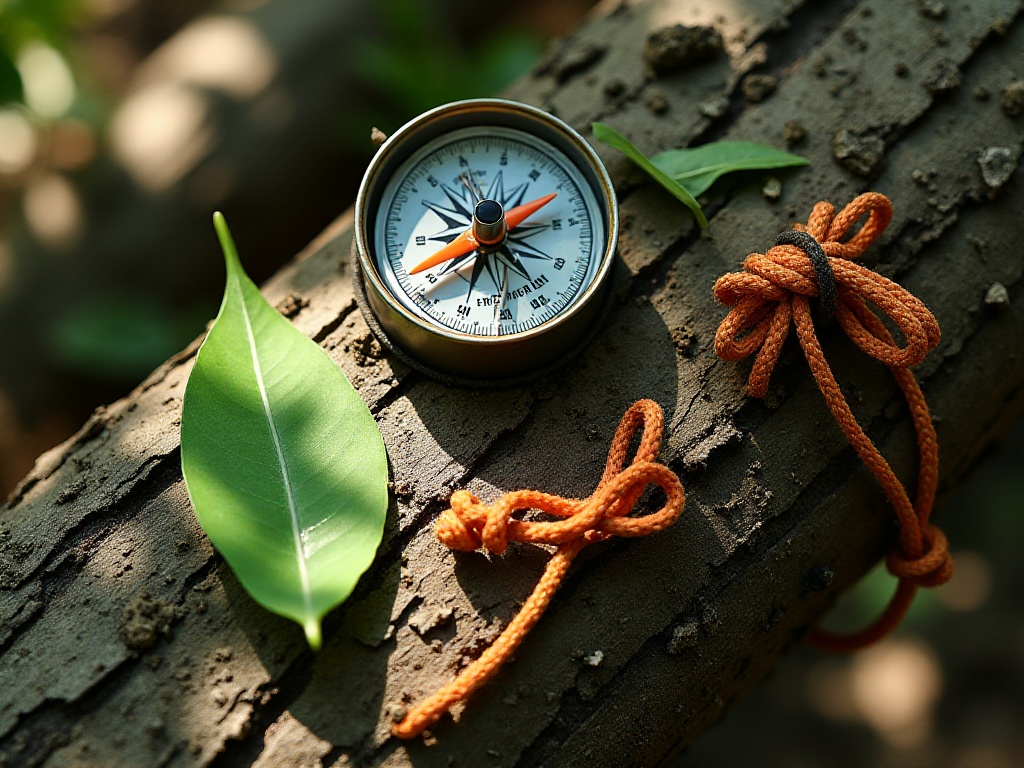Introduction
Brothers and sisters, have you been seeing all those outdoor survival short videos lately? Watching those content creators setting up tents, making fires, cooking, and catching fish with bare hands in the wild - it's so cool! As someone who has been navigating the outdoors for ten solid years, today I'll give you a comprehensive introductory lesson on outdoor survival, so you can enjoy the wilderness both safely and adventurously.
Key Points
Here's a scary statistic: 2023 data shows that over 60% of outdoor accidents were caused by insufficient preparation. Some people go hiking in canvas shoes and end up spraining their ankles; some think a simple tent is enough for outdoor shelter and wake up freezing at night; others think bringing just a phone is sufficient, but poor signal almost prevents them from returning. Therefore, proper preparation is crucial - most pitfalls can be avoided with good planning.
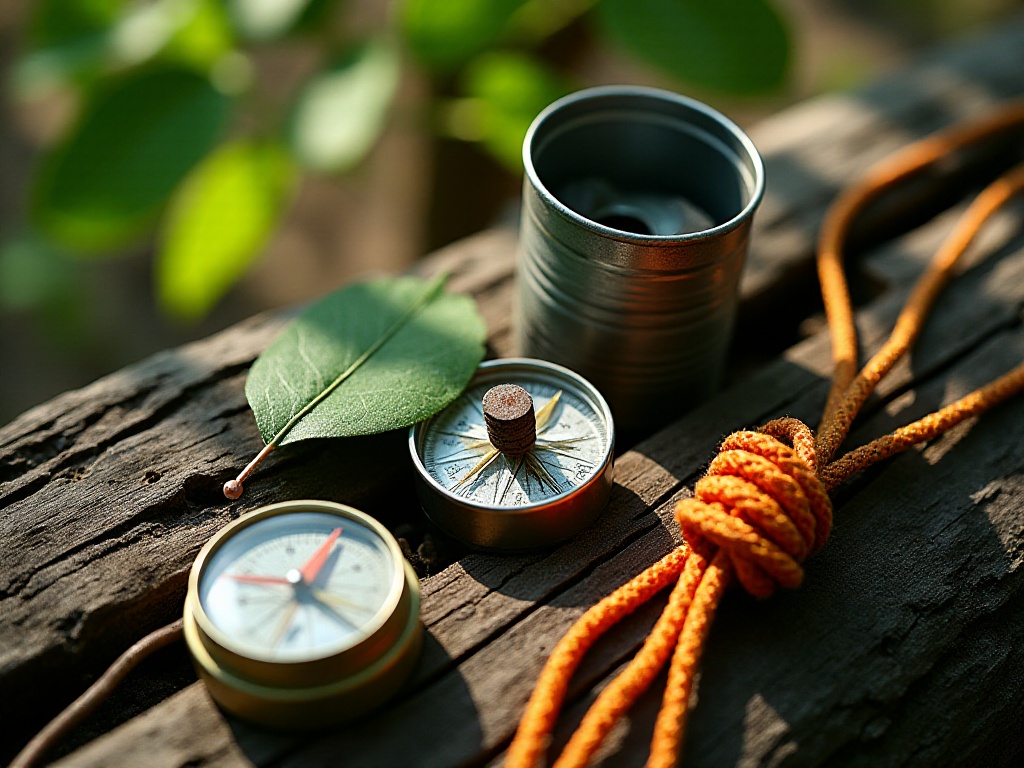
Pre-Trip Essentials
Remember my painful lesson from my first solo camping trip? I was young and cocky then, thinking I could handle anything, and just rushed off to Mount Moganshan with my backpack. The result? Nobody knew my exact location, causing my family to call the police in panic - utterly embarrassing. Since then, I immediately established a strict "notification system." Before each departure, I send my complete itinerary, expected return time, and even parking location to two reliable friends. This information includes detailed route maps, daily distance goals, planned camping spots, and even backup routes.
This "notification system" isn't just busywork. According to professional outdoor rescue teams' data, sharing location information in advance can reduce rescue time by nearly half! Think about it - if you encounter any emergencies in the wild, this information becomes crucial for survival. With today's advanced phone navigation, recording and sharing location information is incredibly convenient - you can easily screenshot and send it to friends.
Besides location sharing, I also closely monitor the weather forecast for the destination for the upcoming week. Not just a general overview, but carefully studying temperature changes, precipitation probability, and wind levels for each time period. For example, last summer, I had planned to camp on Mount Huangshan but cancelled when the forecast predicted severe convective weather. This decision proved absolutely right, as the area indeed experienced heavy rain that day.
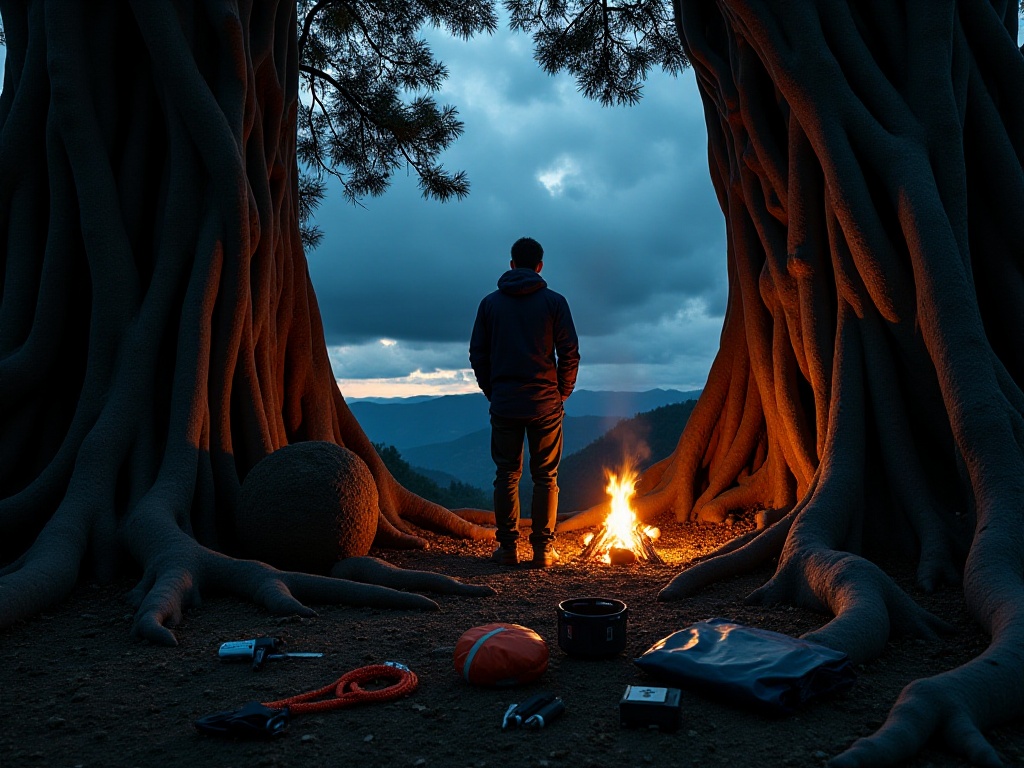
Equipment Checklist
When it comes to equipment, I have plenty to say. I've seen too many people carrying overweight bags filled with useless items. Once I met a companion who packed three sets of spare clothes but didn't bring a basic first aid kit - ended up covered in mosquito bites with no ointment to apply, absolutely ridiculous! So today I'll focus on the "lifesaving trinity" - these are the true essentials for outdoor survival.

Three Essentials
The first essential tool is a multi-functional knife. Don't think a fruit knife is enough - outdoor knives should be multi-purpose. I currently use a 200-gram Swiss Army knife that cost less than $300, offering excellent value for money. This thing is like a treasure box for outdoor survival: it has two blade sizes for cutting rope and whittling wood; a can opener for wilderness food prep; screwdriver functions for equipment repairs; and most importantly, a small saw for cutting thin branches and processing firewood.
I remember once when our team relied on just this one knife to solve various problems: opening cans at lunch, repairing a tent support with loose screws in the afternoon, and processing firewood for the campfire at night. When a girl's sleeping bag zipper broke, we fixed it with the knife's screwdriver. So, a good knife really proves invaluable in the wilderness.
The second essential equipment is reliable fire-starting tools. Many people now think their phone's flashlight is enough - that's really naive. I've seen several cases of people stranded in the dark with dead phones. Last summer, a solo camper faced this situation with only 5% battery left on their phone when it started raining, almost unable to find their way back to camp.
That's why I always carry three types of fire starters: waterproof matches, a lighter, and a magnesium rod. These three serve as backups for each other, effective even in rain. The magnesium rod, in particular, is a wilderness survival marvel - it's moisture-proof, impact-resistant, and really effective, producing 3000-degree sparks with one strike, enough to light anything.
The third essential is a first aid kit. Speaking of this, I recall another painful lesson. Last year on Mount Wugong, a teammate didn't bring a first aid kit, developed a blister on their foot, and eventually couldn't walk, delaying the entire group. Actually, a basic first aid kit only weighs 500 grams and doesn't take up much space, but it can be lifesaving in crucial moments.
My first aid kit essentials include: band-aids (several sizes), bandages (both elastic and regular), disinfectants like iodine or hydrogen peroxide, pain relievers, cold medicine, diarrhea medicine, plus some cotton swabs and medical tape. All these items together are just palm-sized but can handle over 90% of common issues.
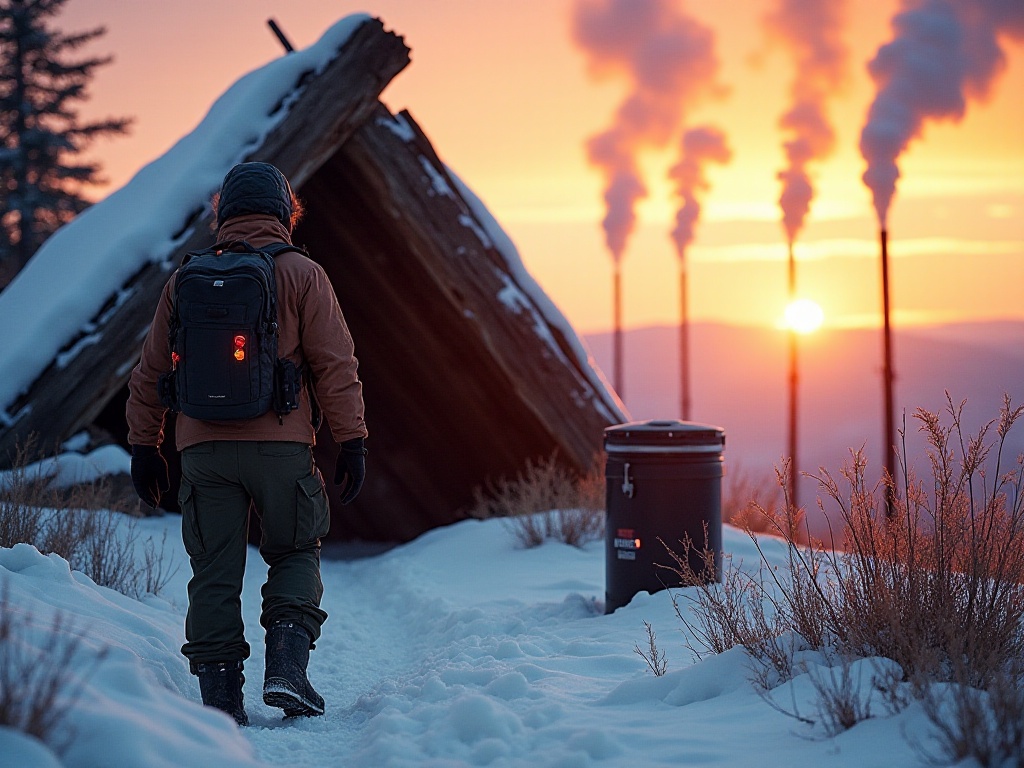
Practical Tips
Regarding practical tips, I have many secrets to share. Let's start with the magical clear tape. This thing is absolutely versatile in the wilderness! I always wrap some around my water bottle, ready to use when needed. It can temporarily repair clothes, secure tents, and even start fires. Once when my rain jacket got torn by a branch, I temporarily patched it with clear tape, and it lasted until I got home.
Waterproofing is another major issue. I've developed a super useful trick: putting garbage bags in the backpack as waterproof liners for important equipment. Remember that downpour I encountered on Mount Wugong last year? This trick saved my camera and spare clothes. Many people spend big money on rain covers, but ordinary garbage bags work well too - they're light, cheap, and easily replaceable if damaged.
For backpack organization, I have a special technique. I organize all equipment by frequency of use: most frequently used items in outer pockets, like maps, compass, snacks, and drinking water; middle layer for spare clothes and cooking gear; innermost layer for first aid kit, spare batteries, and other hopefully-never-needed equipment. This arrangement makes items easily accessible and quick to find in emergencies.
Let's talk about campsite selection techniques. Many beginners choose spots that look scenic, but there are many factors to consider when selecting a campsite. First, check the terrain - choose slightly elevated areas to avoid water accumulation during rain; stay away from large trees, especially dead ones, to prevent falling branches in strong winds; finally, consider camp orientation, avoiding prevailing wind directions for a peaceful night's sleep.
There are many tricks to using equipment properly. For sleeping bags, many don't know to shake them loose before use to maximize insulation. Tents should be set up following the terrain's slope, with the door facing away from prevailing winds. Always check stove valves for leaks before use and keep them away from flammable materials. These lessons were learned through countless mistakes.
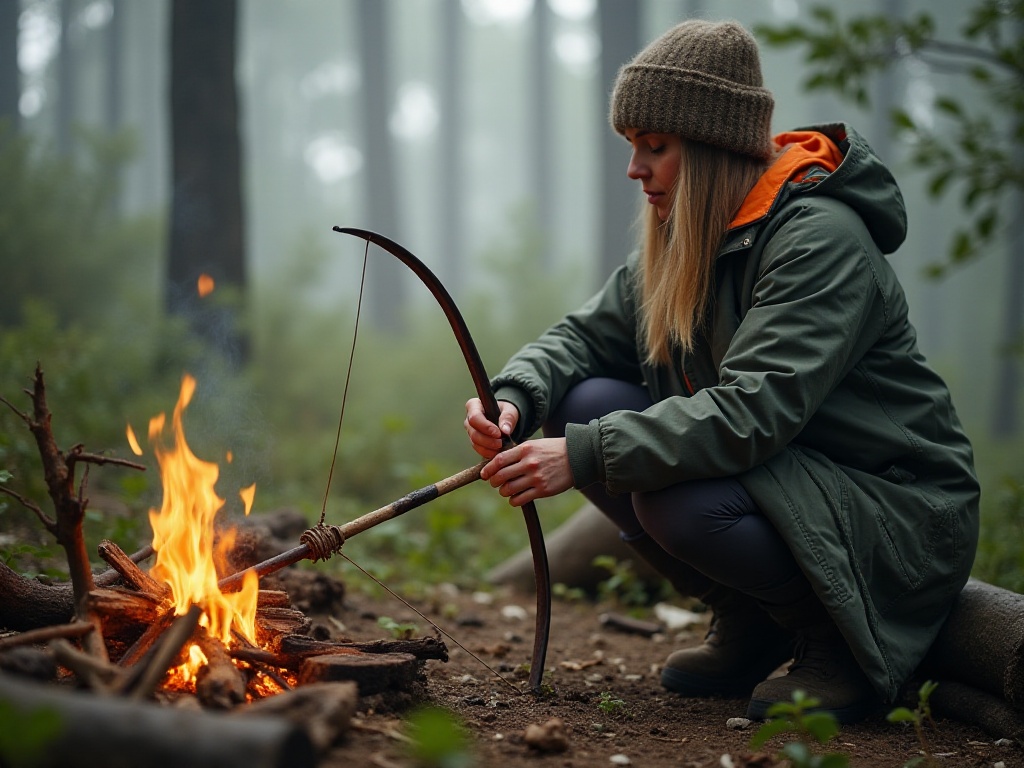
Concluding Thoughts
Through today's sharing, I hope everyone has gained a deeper understanding of outdoor survival. Remember, in the wilderness, your life safety always comes first. No matter how cool the equipment or how professional the skills, nothing is more important than thorough preparation. As I always say: in the wilderness, it's better to be prepared and not need it than to need it and not have it.
Finally, I want to ask everyone: if you were to pack a survival bag right now, what would you put in it? Have you already formed your own ideas? Feel free to share and discuss in the comments.
Next time, I'll explain outdoor orientation and rescue techniques in detail, including how to use a compass, how to determine direction, and what to do in emergencies. This is all potentially life-saving knowledge, don't miss it! After all, understanding these skills not only makes your outdoor adventures safer but might also come in handy one day!




